The lumpy bracket mushroom (Trametes gibbosa) is one of many bracket-forming polypores that grow on dead and decaying wood. It is commonly confused with others, but there are a few key points, namely the lumpiness of its cap, that can separate it from most other species. The lumpy bracket polypore is probably not native to North America; studies done in 2007 showed that it is likely a European species that was introduced at some time in the past.
The lumpy bracket fungus is a semicircular or kidney-shaped bracket that grows on dead hardwood trees and stumps, especially beech. The mushroom’s most striking feature is its white to grayish upper surface, which often takes on a greenish tint as it ages due to algal growth. The underside has unique, elongated, maze-like pores that start white and gradually turn to a creamy color.
- Scientific Name: Trametes gibbosa
- Common Names: Lumpy Bracket
- Habitat: On dead and dying trees
- Edibility: Inedible
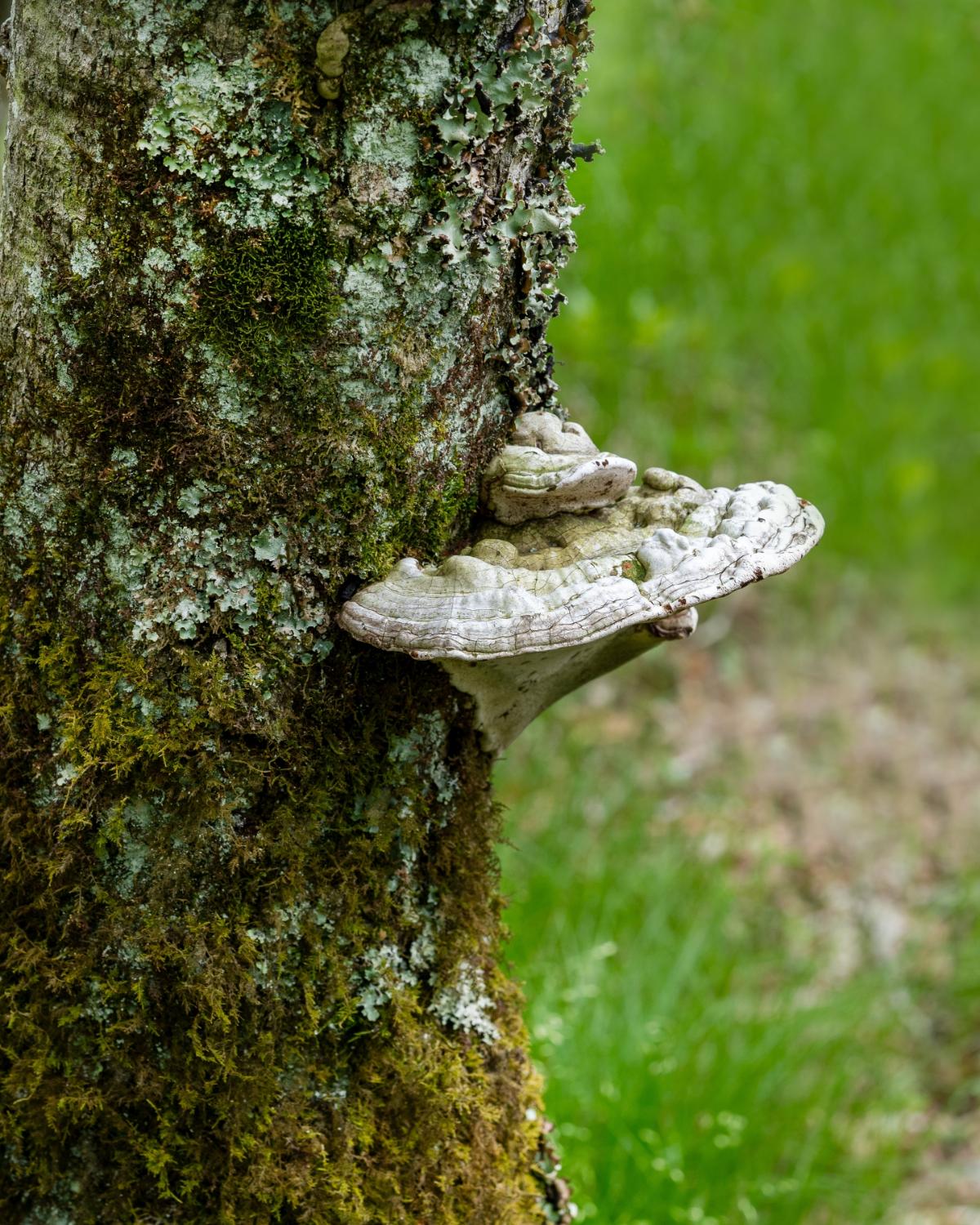
Jump to:
All About The Lumpy Bracket Mushroom
The lumpy bracket mushroom is part of the polypore family. It is related to the turkey tail mushroom (Trametes versicolor) and the hairy bracket mushroom (Trametes hirsuta).
This mushroom was first described to science by Persoon in 1795. Since then, it has gone through many taxonomy changes. Some synonyms include Merulius gibbosus (its original name), Daedalea gibbosa, Lenzites gibbosa, Polyporus gibbosus, and Pseudotrametes gibbosa. The mushroom has also been known as Trametes crenulata and Trametes nigrescens in different systems.

The genus name “Trametes” comes from Latin and means “thin.” Most species in this genus are indeed thin, but the lumpy bracket is actually thicker than many of its relatives; it is a chunky member of the Trametes genus. The scientific name “gibbosa” is from Latin and means humped or swollen. This perfectly describes the lumpy bracket’s uneven and irregular cap shape.
Historically, lumpy bracket mushrooms were used to start fires and make crafts. And, it was used in traditional Chinese medicine for its anti-inflammatory and antiviral properties. The mushroom does really have medicinal properties, too, according to more recent research.
The lumpy bracket is a saprophytic white rot fungus, which means it breaks down lignin in wood. This process turns solid wood into a soft, spongy, light-yellow or white, pulpy mass, which is a key component of nutrient cycling in forests.
The species grows in temperate forests across Europe, Asia, and North America. It gets nutrients from decomposing organic material, particularly dead or decaying wood. While it prefers hardwood trees, especially beech (Fagus species), it will also grow on oak, sycamore, birch, and maple.

Lumpy Bracket Mushroom Identification Guide
Season
The mushroom is a perennial bracket fungus; you can see them year-round, and they continue to grow through the years. These mushrooms can be found in any season. The main fruiting season runs from late summer through winter.
Habitat
The lumpy bracket primarily grows on dead deciduous wood, and beech trees are its favorite host. However, it also grows on other hardwoods, like oak, sycamore, birch, and maple too. It may grow alone, in overlapping groups, or scattered over a log.
Lumpy bracket mushrooms tend to prefer humid locations with some shade and plenty of moisture. They grow alone or in overlapping groups, depending on the size of the wood. Seeing them tells you the woodland ecosystem is busy breaking things down.
It is believed to be originally native to Europe, but it has spread to North America and Asia. According to a 2007 study, the lumpy bracket arrived in North America as an introduced species. Experts first confirmed it in the USA and Canada in 2007, and thought someone had brought it in at that time. It is likely it arrived here earlier than 2007, though. This mushroom has spread fast across North America, mostly east of the Great Plains and in the Pacific Northwest. People have found and documented it in Illinois, Michigan, North Carolina, and Ohio.
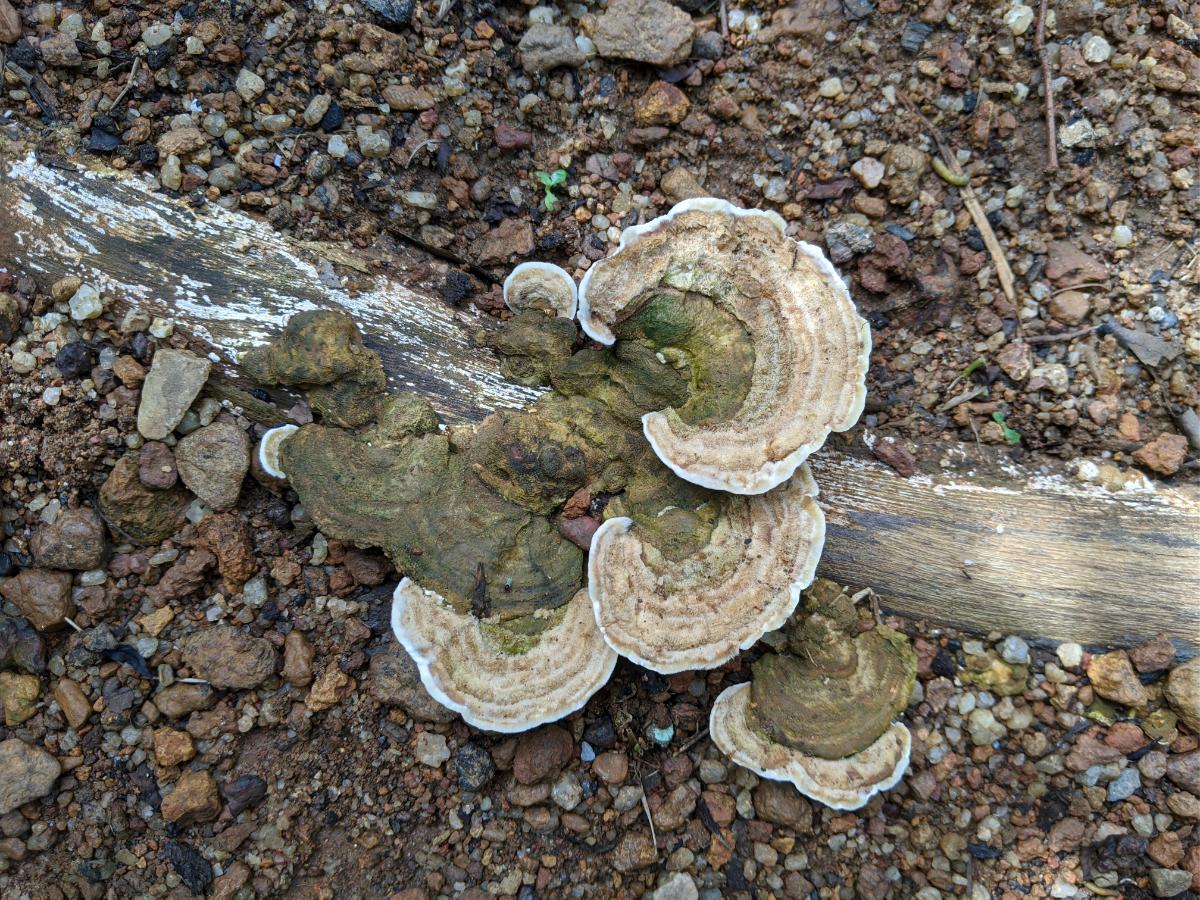
Identification
Cap
The cap of the lumpy bracket mushroom is semicircular or kidney-shaped with a distinctive lumpy or swollen area where it attaches to the wood. The mature mushrooms are usually very thick and dense, where they attach to the wood. These mushrooms grow between 2-8 inches across and can be up to 3 inches thick at the base. This is significantly thicker than most other Trametes species.
The cap surface is velvety at first because it is covered in fine surface hairs. This texture, though, becomes smoother as the fungus ages and the hairs wear off. The younger specimens have a notably thick cap edge (like an outer “lip”) – a key feature that helps identify the species.
Lumpy bracket caps are white to cream-colored and sometimes have hints of gray or buff. The edges of the cap are lighter than the center.
Very often, the mushroom cap is covered in green algae. This gives older specimens a striking green color. This green coating appears so often that it can help identify them in the field.
Pores
The lumpy bracket has distinctively elongated, somewhat rectangular pores that sometimes create maze-like patterns. Most other polypores have round or angular pores. These pores start white to gray-white and develop a creamy color as they age. Sometimes, the pores turn yellowish, pinkish, or brownish when touched, though not always.
Stem
This lumpy bracket mushroom does not have a distinguishable stem. The cap attaches directly to the wood host.
Flesh and Staining
The lumpy bracket’s flesh is whitish, tough, and has a corky or leathery feel. It does not change color when cut. This toughness makes it unsuitable for eating.
Smell and Taste
The fungus usually has no distinct smell, though fresh ones might give off a faint, sweet, or strong fragrance. It tastes mild to slightly bitter, but it’s tough and inedible, so there’s not much reason to taste it.
Spore Print
A spore print (though hard to get from bracket fungi) is white to faintly yellowish.

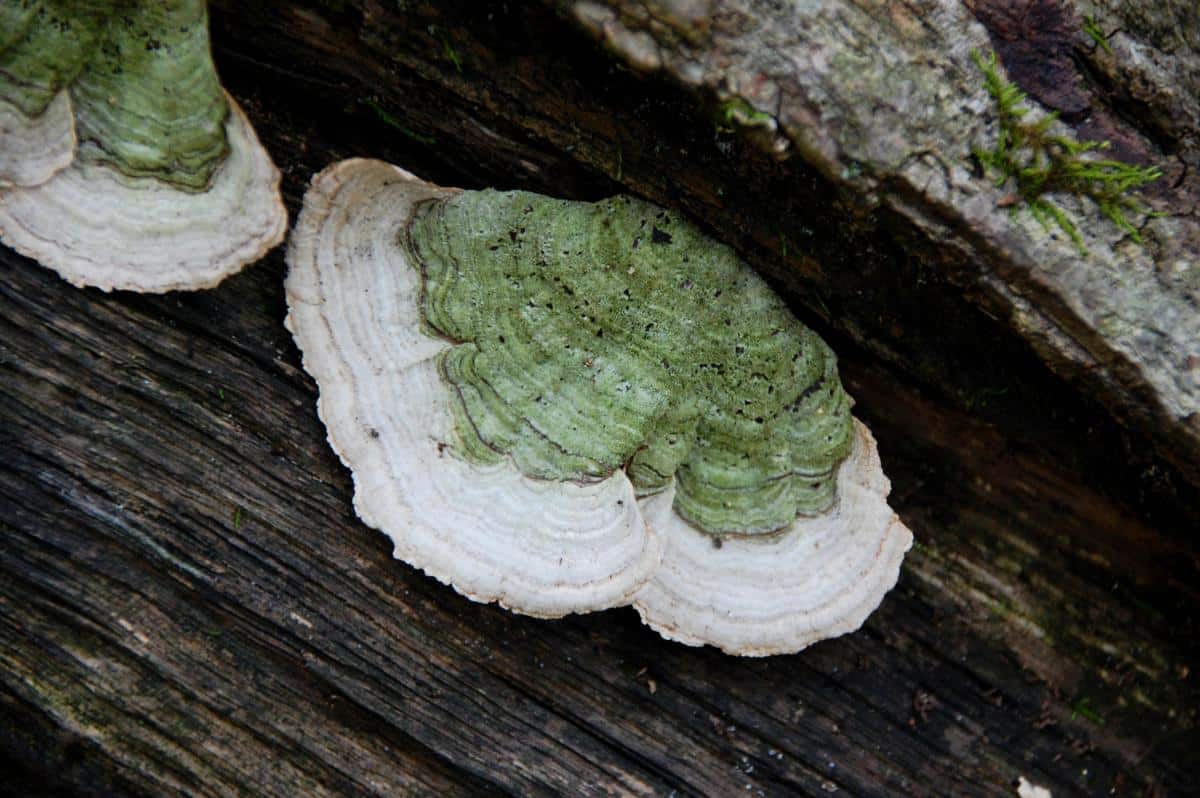
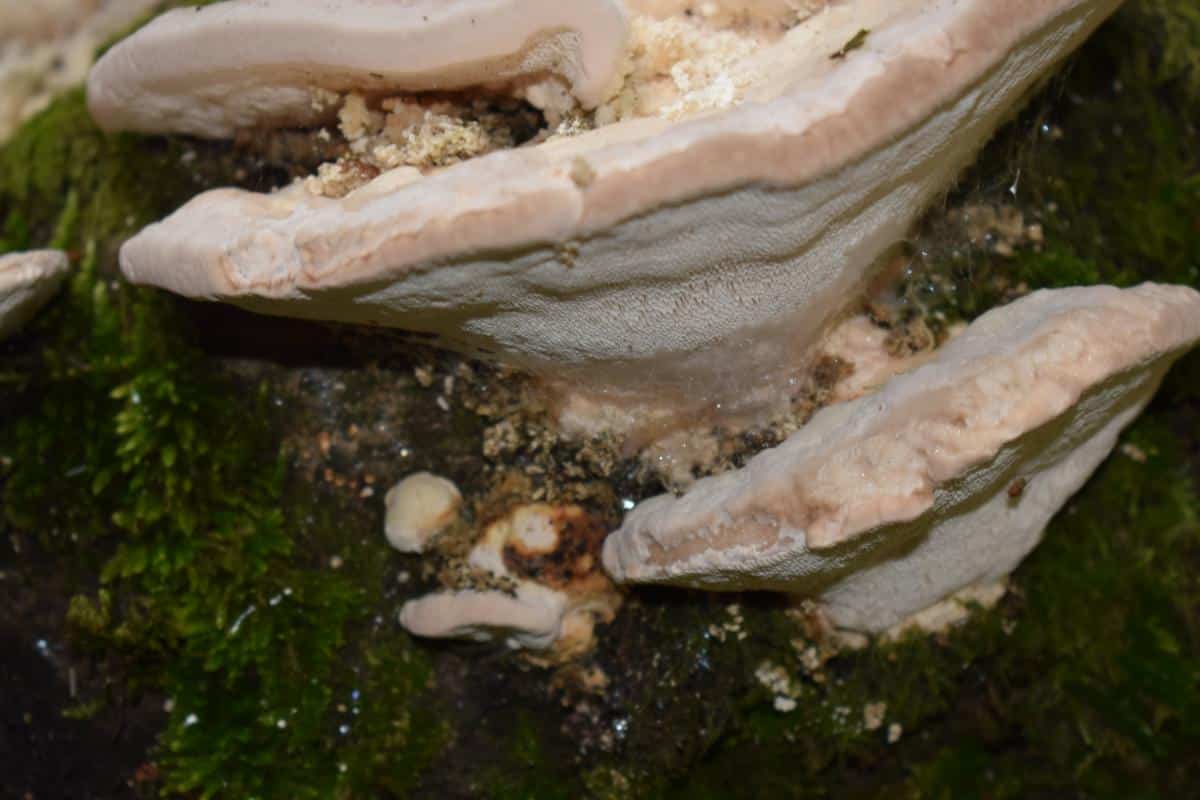
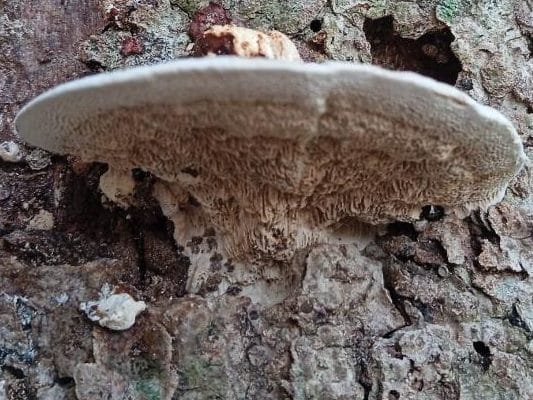
Lumpy Bracket Lookalikes
Turkey Tail (Trametes versicolor)
Turkey tail is one of the species people most often mix up with the lumpy bracket. This isn’t usually because they look that much alike, but because the turkey tail is so well-known and sought-after, so folks are hoping that’s what they’ve found.
The quickest way to tell these two apart is their thickness. Turkey tail mushrooms are thin, almost paper-like, while the lumpy bracket is more solid and thick. In addition to this, turkey tail mushrooms have bright concentric zones of color, from blues and grays to browns and oranges, which makes them look like real turkey feathers. The lumpy bracket is usually whitish all over, or green because it is covered in algae. It never has concentric zones of color.
Turkey tails also do not usually get taken over by algae, so they will rarely be green like the lumpy bracket mushroom. Finally, the underside of the turkey tail is white with tiny, round pores. These are noticeably different from the lumpy bracket’s pores, which are bigger, rectangular, and form maze-like patterns.
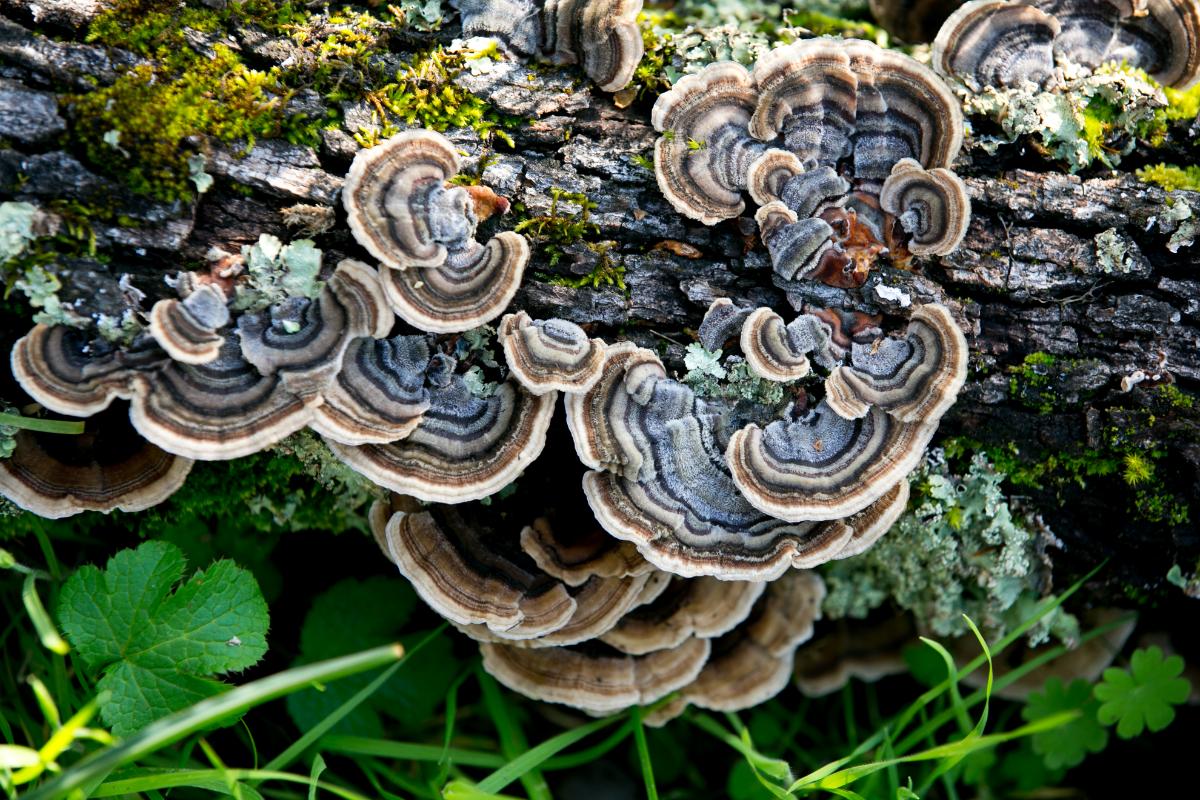
Hairy Bracket and Downy Bracket (Trametes hirsuta and pubescens)
These two species are very similar to the lumpy bracket mushroom and can also be hard to separate from each other. Hairy Bracket (Trametes hirsuta) has a thick, hairy or wooly surface with concentric zones of white, brown, and gray. The Downy Bracket (T. pubescens) is mostly cream-colored with a velvety surface and lacks distinct color zones.
Both species grow thinner than mature lumpy brackets and don’t have the characteristic elongated pores. The downy bracket also grows in bigger clusters than the lumpy bracket or hairy bracket.
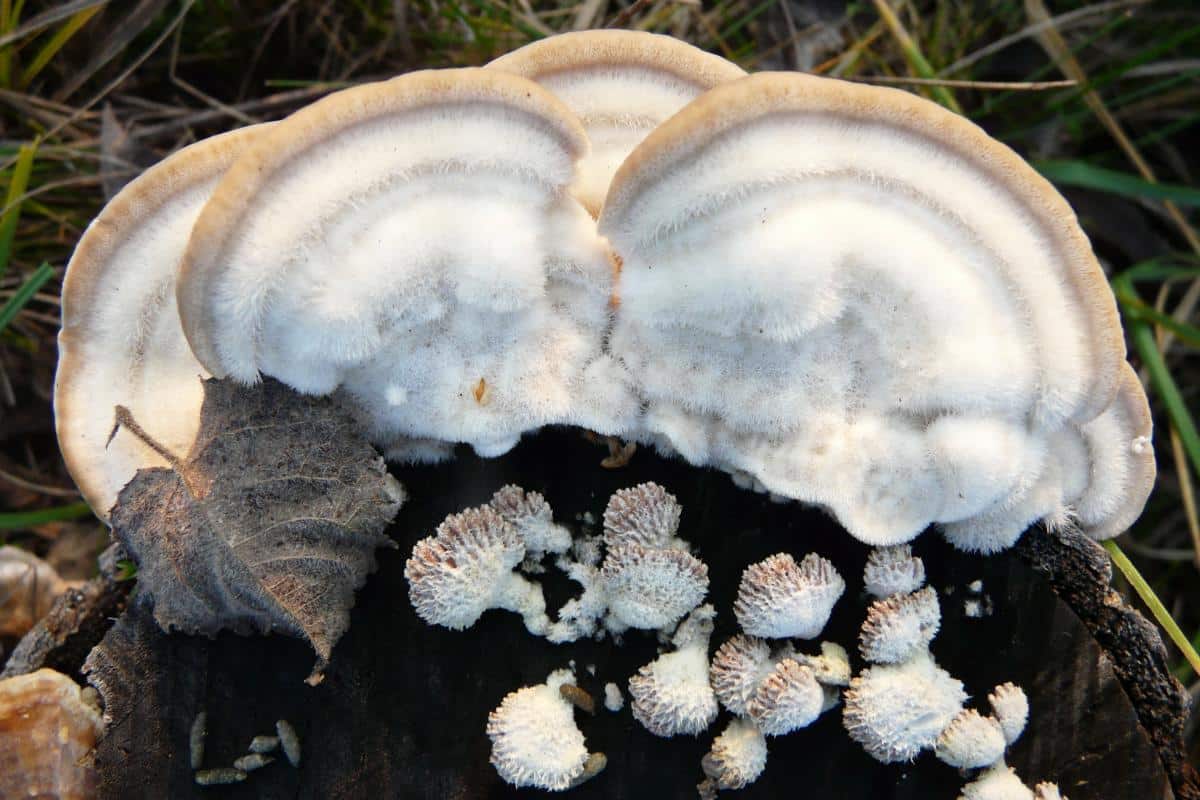
Gilled Polypore (Trametes betulina)
The gilled polypore, as you might guess, has true gills instead of pores on the underside. This is a quick and easy way to tell it apart from the lumpy bracket mushroom.

Are Lumpy Bracket Mushrooms Edible or Medicinal?
The lumpy bracket mushroom is inedible. The fungus isn’t toxic – it just has a very tough, woody texture and tastes bitter.
Scientists have found several promising properties in lumpy bracket extracts. In traditional Chinese medicine, this mushroom is used to treat cancer. Modern research backs this up, showing that lumpy bracket has antioxidant, anti-inflammatory, and antimicrobial properties.
Studies have also revealed that it might help lower blood sugar and cholesterol levels. Some parts of the mushroom could even protect against type A influenza. Right now, most medical uses are still in the testing phase.
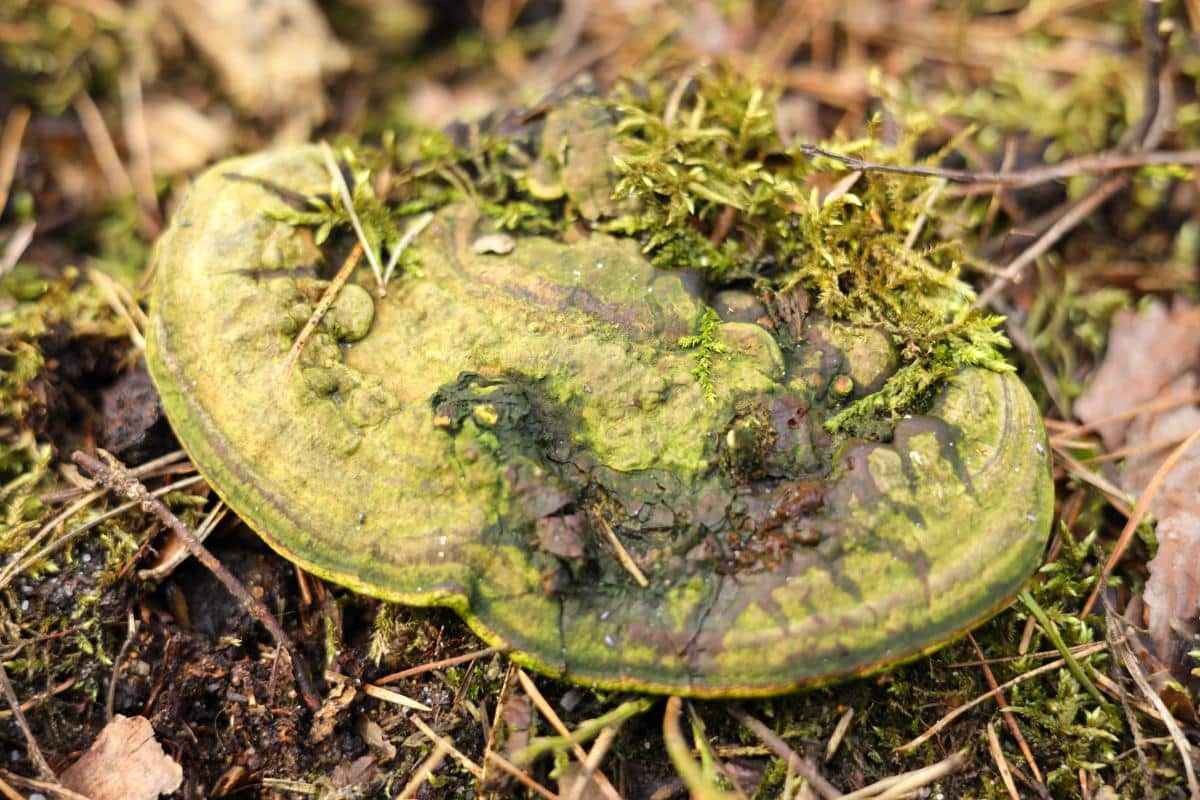
Common Questions About Lumpy Bracket Mushrooms
Are lumpy bracket mushrooms edible?
Lumpy bracket mushrooms are not edible because they are extremely tough and woody, and taste bitter. While these mushrooms are not toxic, they do not have any culinary applications.
What is the ecological role of lumpy bracket mushrooms?
Lumpy bracket mushrooms are decomposers. They break down lignin and cellulose in dead wood, transforming it into nutrient-rich material that feeds the forest ecosystem and contributes to nutrient cycling.
Are there any medicinal uses for lumpy bracket mushrooms?
Research has shown that lumpy bracket mushroom extracts possess potential antioxidant, anti-inflammatory, and antimicrobial properties. Studies have also indicated possible anticancer, hypoglycemic, and hypolipidemic effects, though these applications remain largely experimental.
How widespread are lumpy bracket mushrooms?
Lumpy bracket mushrooms are widely distributed. They’re native to and common in Europe and parts of Asia. Since their introduction to North America in 2007 (or thereabouts), they’ve spread rapidly, particularly in the eastern United States and the Pacific Northwest.

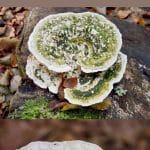

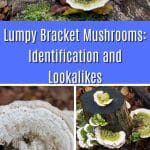
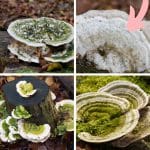
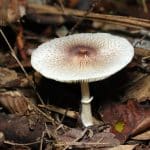



Leave a Reply